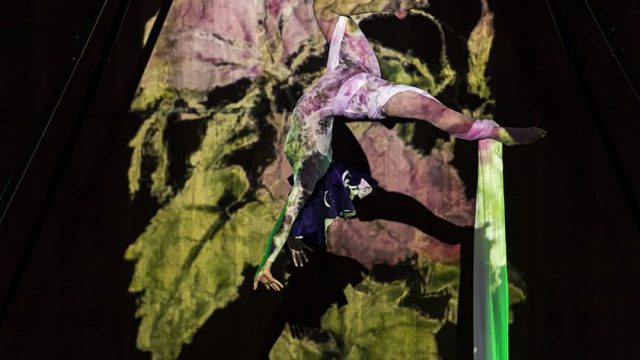You were once a child who liked playing games and making up your own rules. Then you grew up, settled into a job and accepted the absurd notion that games are a waste of #productivity.
If that’s you, then read on.
But first, an important question. Have you ever been on a panel? You know, when experts sit on a stage with mics and talk about stuff in front of an audience. Until last month, I hadn’t. And then I joined one about designing games, at the V&A. I was super happy to share the stage with Karen Rubins, former V&A resident, designer of the Comic Turns storytelling game, comic creator and overall awesome human being.
Of course, Karen and I decided to gamify the event…
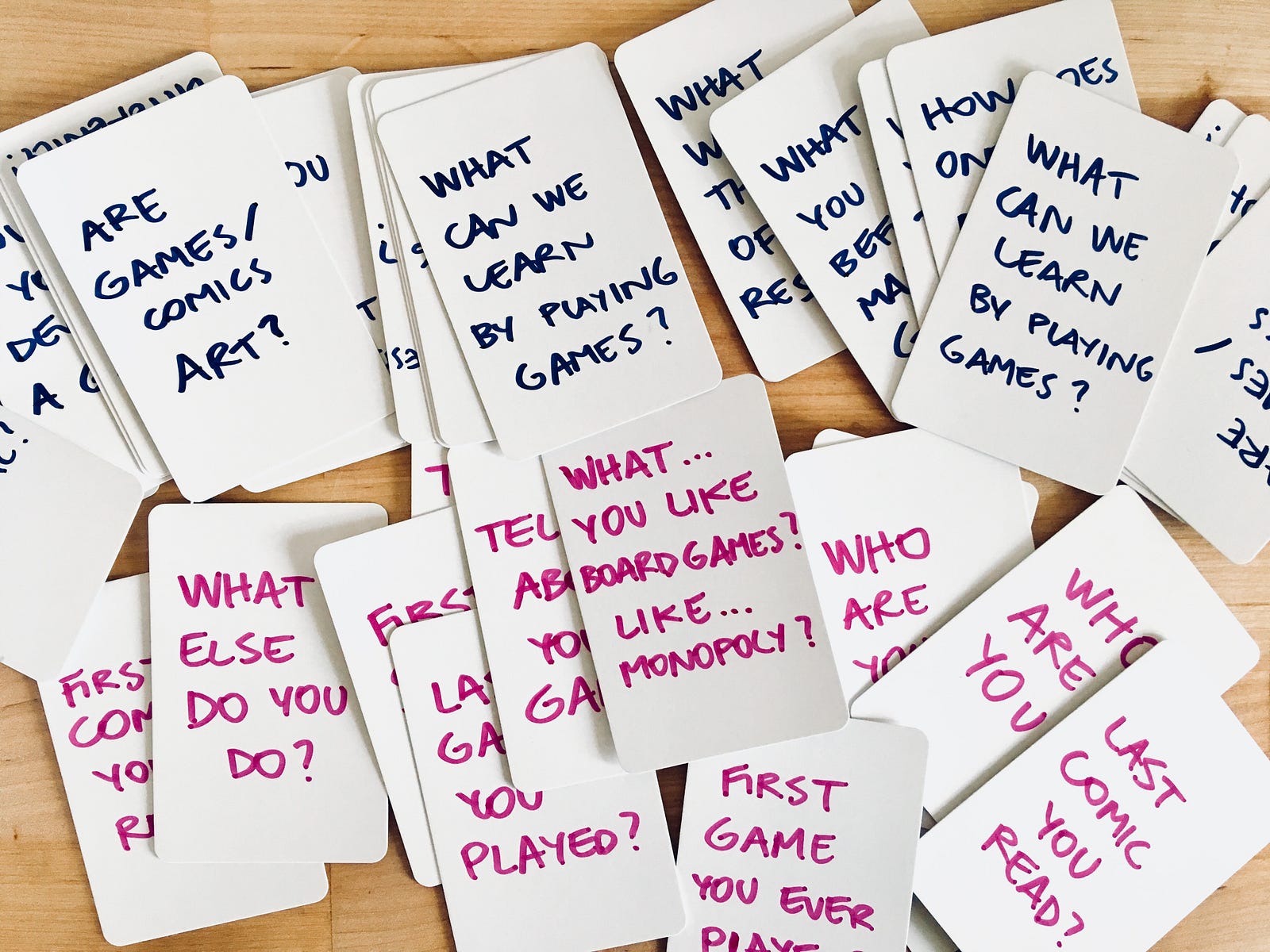
We prepared a deck of question cards, then took turns asking and answering them. Meanwhile, members of the audience scribbled and doodled their own question cards, for us to answer in the second half. It’s an interesting format. Try it next time you get to play the panelist!
Here are my answers to some of the questions we drew. I’m leaving the best three audience questions for last.
- Who even are you?
- What was the first videogame you played?
- And the first videogame you made?
- But you like boardgames these days, right?
- Tell us about the game you’re currently working on.
- What is your process for making a game?
- How does one transition into a career in games?
- Is a portfolio important to get employed in game development?
Who even are you?
Quite the existential question. Let’s park the impostor syndrome and get to it.
I’m Matteo. I make games and teach people how to get started with game-making. It appears I’m the V&A videogames artist in residence.
I grew up in Italy and spent many afternoons playing videogames as a kid. A few years later, I learned to code so that I could cobble together a videogame about ancient Greek philosophy. Then went on to build digital toys for the BBC and the Science Museum.
As a grown-up, I’m still obsessed with games, but not your typical kill-everyone-loot-everything type game. I draw inspiration from social issues and current events to make games that provoke what I call Minimum Playable Dilemmas (more on this below).
What was the first videogame you played?
My dad was a civil engineer. He ran a studio with other engineers on the ground floor of our house, and we lived on the first floor. We had computers in the studio since I can remember (it was the late 1980s) but I wasn’t really allowed to play with them. The only two exceptions were MS Paint and SimCity.
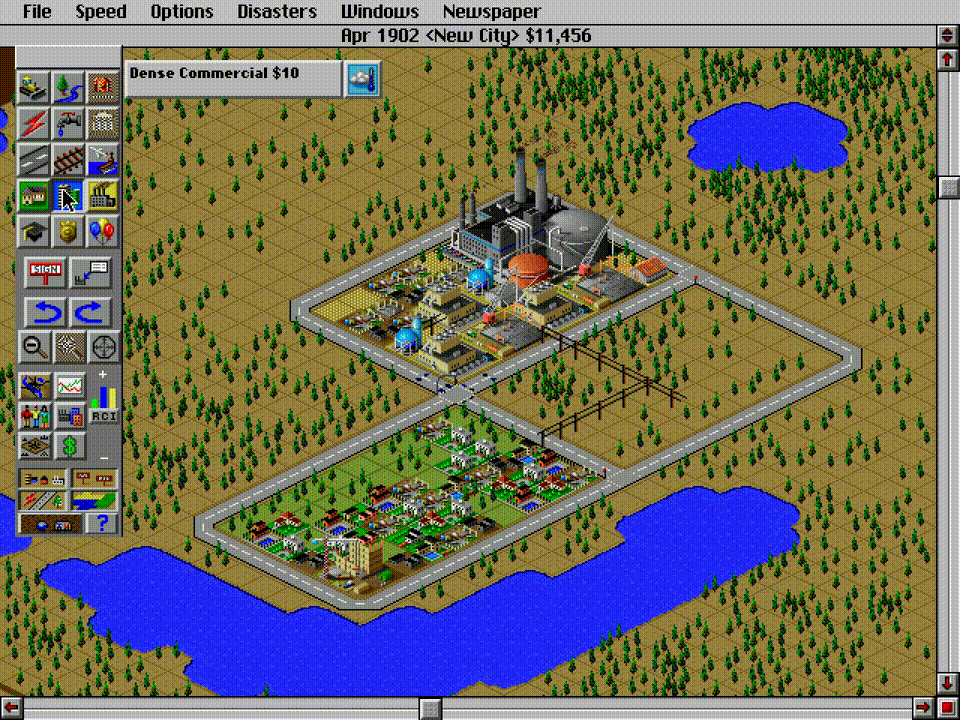
SimCity was a revolutionary videogame at the time, because it was open-ended. It could neither be won or lost. You (the player) are the mayor of a new city, founded in a semi-fictional 1900. You get a blank map to begin. You must expand and manage the city with the budget provided.
This genre of games became known as god-games because you control the city from above, but you’re not almighty. You build infrastructure and collect tax, your only source of income. Designer Will Wright compared it to gardening: you have limited control over a living organism.
My first attempt at SimCity was to recreate the town where I grew up.

I failed miserably. What I painstakingly created didn’t look or feel like my hometown. On top of that, my virtual citizens hated it. Like a vengeful god, I ended up unleashing alien monsters and disasters on my creation.
It’s not just that I was deluded. The game was sold as a realistic simulation of how cities, all cities, work. The possibilities are endless, recited its slogan. Turns out the only type of city you can successfully grow is a grid-based, car-centred (North American) city. Will Wright and his team filled the game with what they thought were the models and mechanisms of a good city. Low taxes, endless growth, no racial tensions.
That early gaming experience taught me that games are full of bias, even when they present themselves as realisticsimulations. We need to look critically at what’s been included and what’s been left out. We need to question the choices made by game designers like we would question the choices made by film directors or screenwriters.
And the first videogame you made?
At 22 I moved to London to study interaction design, which at the time was a relatively new thing. I was tired of making pretty-looking but static work that nobody could play with. Games however, only exist when players interact with them, so I set out to make a videogame.
I spent a year tinkering with Flash. I also met Paolo Pedercini from Molleindustria, who was very encouraging and even emailed me the full source code of his McDonald videogame, which I printed out and read religiously before bed

At the time I was fascinated by Plato’s allegory of the Cave, in which the ancient Greek philosopher talks about different layers of reality. In the allegory, a group of people grew up inside a cave, chained and forced to watch a puppet show. For them, the puppets shadows are reality. Until some of them break free and experience the real reality.
So I designed a playable version of the cave allegory, with a reality-TV twist. Your shadow would be televised via webcam inside a room full of contestants, who you’d try to manage. Too many notes, as Mozart’s patron would say, which made the game rather hard to make sense of, let alone to play.
Still, through that project I learned to code. With only one videogame in the bag I landed my first job after uni.
But you like boardgames these days, right?
Yes, I love boardgames because the game-making process is quick, collaborative and accessible. There are practically no barriers to entry.
Anybody with a game idea can paper-prototype it! Even you.
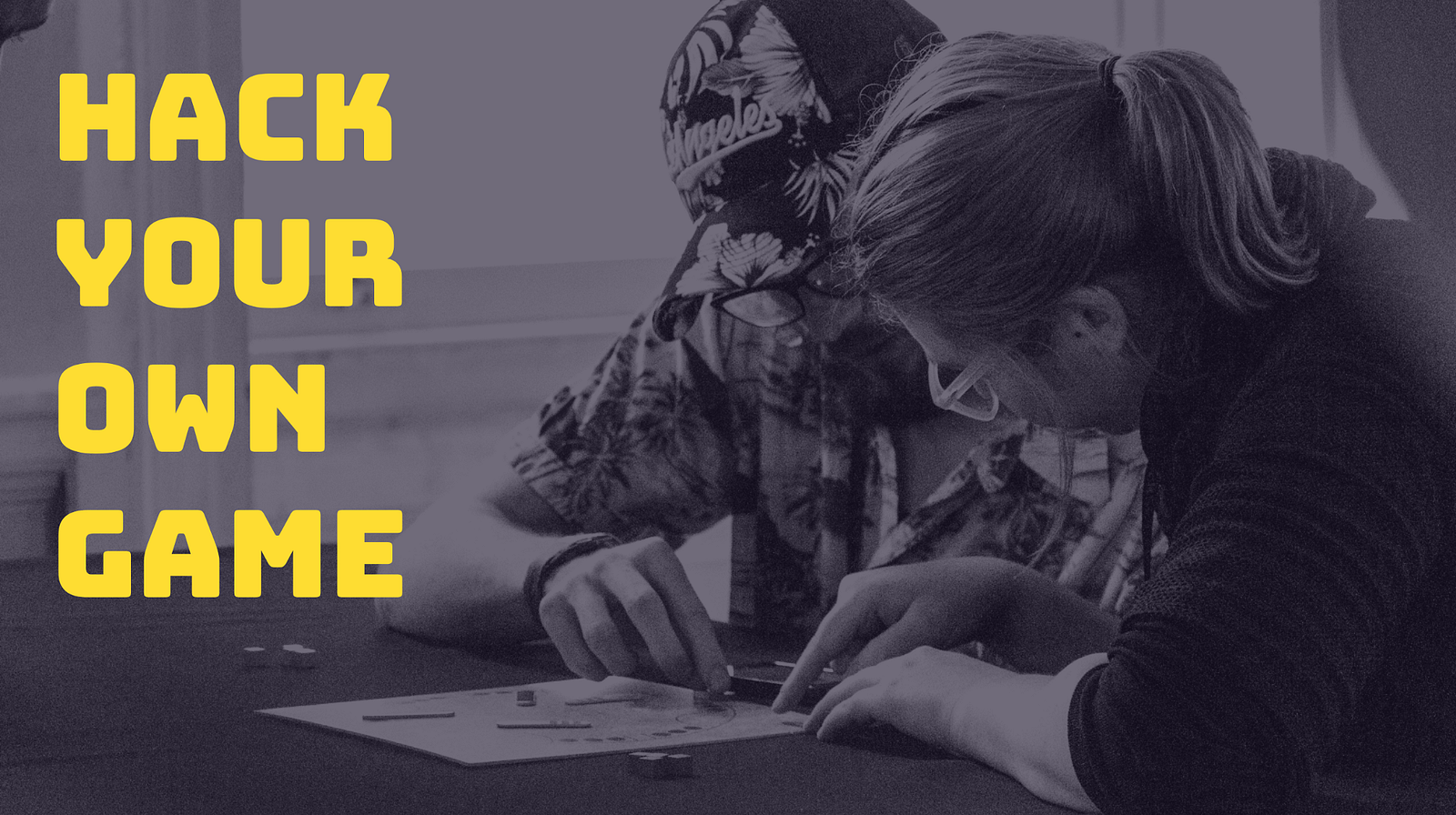
My mission at the V&A: to seed the idea, in as many people as possible, that they can move beyond consuming digital entertainment and become game makers. Starting with boardgames.
Boardgames have been around for millennia, but they still tend to be confined in the entertainment section of culture. The mainstream understanding is that games are playful pastimes, lightweight activities, things people do “just for fun”.
When I ask “what’s a boardgame you played?” most people will say Monopoly. Did you think of Monopoly too? And did you know Monopoly was originally a political game?

Elizabeth Magie wanted to teach people about the negative consequences of monopolies (when a resource, such as land, becomes the property of very few people).
She designed two rulesets for The Landlord’s Game, to give players a practical demonstration of the present system of land grabbing with all its usual outcomes and consequences and hence to understand how different approaches to property ownership can lead to vastly different social outcomes.
1. Under the Prosperity rules, every player gained each time someone acquired a new property (designed to model a policy proposal of taxing the value of land), and the game was won (by all) when the player who had started out with the least money had doubled it.
2. Under the Monopolist rules, players got ahead by acquiring properties and collecting rent from all those who were unlucky to land there, and whoever managed to bankrupt the rest emerged as the winner. Sounds familiar?
Magie patented The Landlord’s Game in 1904. Thirty years later Parker Brothers bought the patent for ~$500 and re-launched the game as Monopoly, with only the Monopolist ruleset.
Isn’t it funny (and sad) that the first educational boardgame, designed by a visionary woman, was turned into the most commercially successful (implicit) celebration of capitalism?
Tell us about the game you’re currently working on.
Beesness started in late 2015 as a broken prototype for a workshop I was running at Mozfest. At the time I wanted to make a game like Code Monkey Island or Bits and Bytes that helps children learn to think like coders. I was tinkering with a “robot bee” idea, but that got hijacked by another idea, or rather a pun:
What happens if you turn a beehive into a capitalist enterprise, aka a beesness?
So I set out to make a game about capitalist bees.
Inspired by the Landlord’s Game (the original Monopoly) each version of Beesness models a possible economic system, by reconfiguring how the same core components — bees, flowers and honey — interact with each other.
Players are constantly faced with moral dilemmas, in a tension between trying to win the capitalist race and avoiding an ecosystem collapse, aka beesaster.
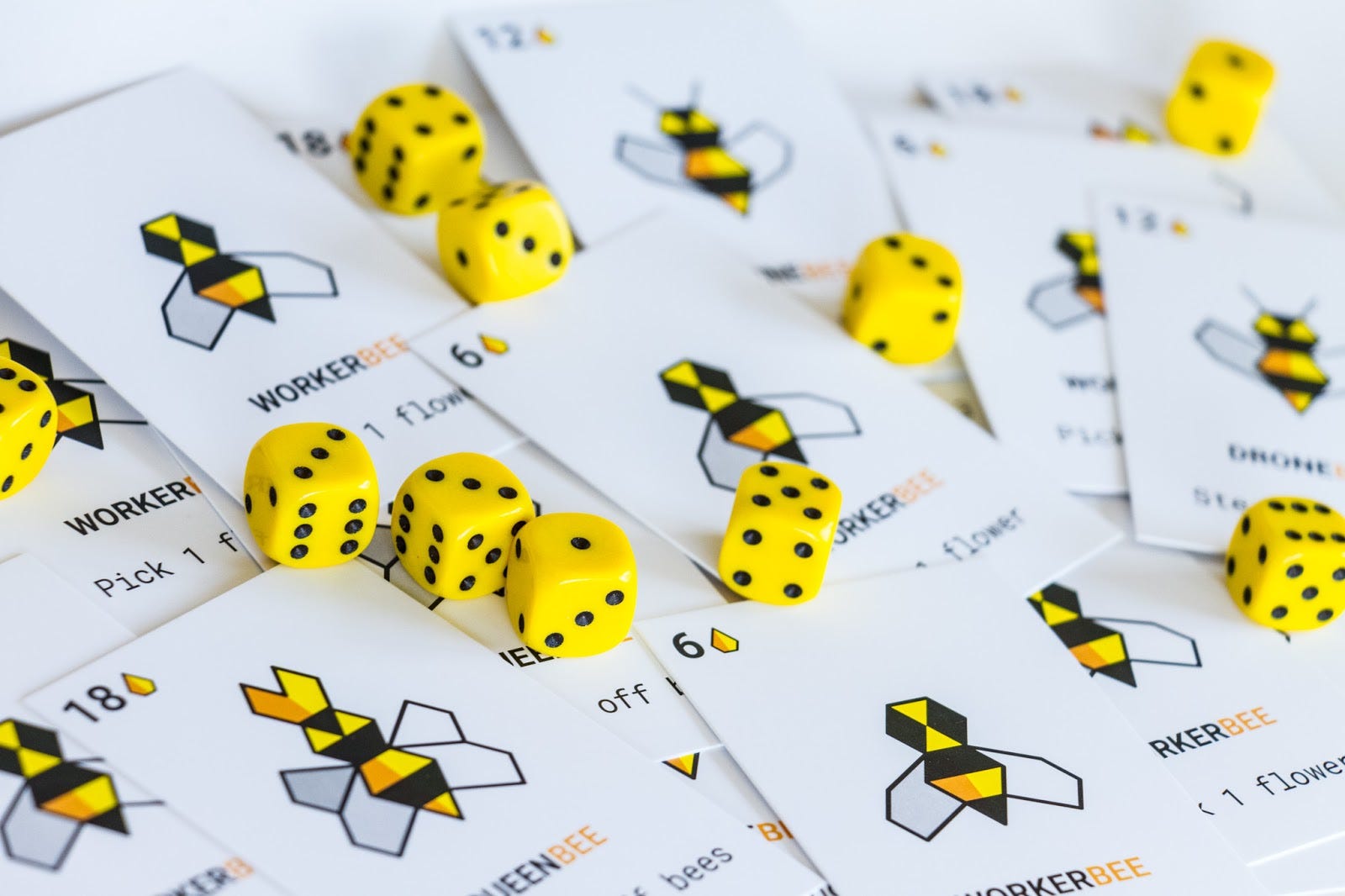
Something interesting happens when I play this with adults: nice, reasonable people turn into ruthless monsters, and the game often ends in beesaster.
What do you think happened when I asked primary school kids to play the Beesness?
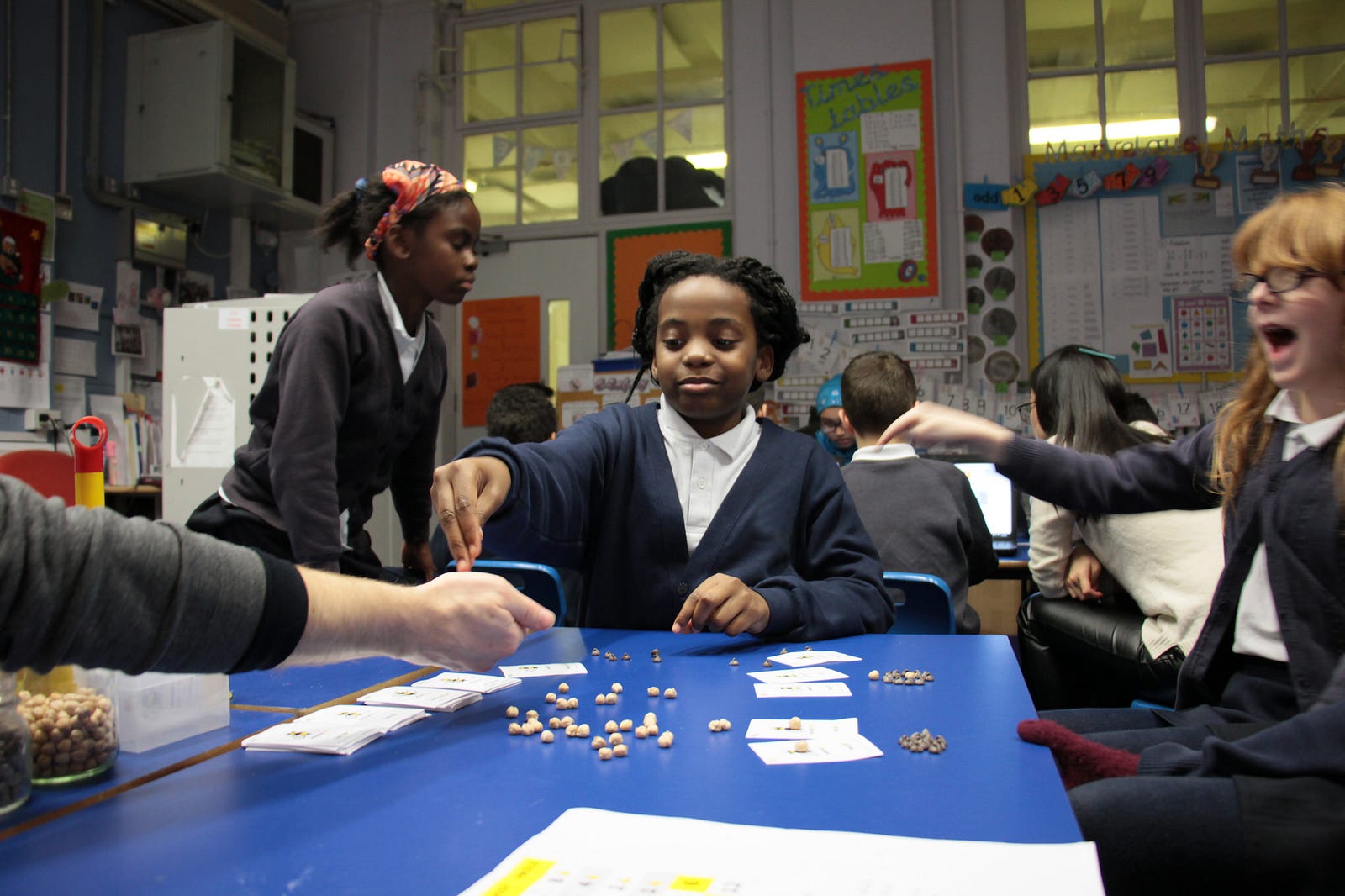
Thank goodness they are the ones who will run the world in a few years, because they established a fairly profitable market, without depleting the commons.
With Beesness I want to create safe spaces for young people to playfully explore alternatives to the dominant ideology of our time.
I want to encourage them to play a different kind of game, and even more importantly, to start making new games that question our
And now the questions cards we drew from the audience.
Q: What is your process for making a game?
I draw inspiration from social issues and current events to make games that provoke what I call Minimum Playable Dilemmas: presenting players with uneasy choices that question their real-life ethics, and make them think beyond the magic circle of the game.
My process is far from linear, but I could possibly boil it down into these six steps for you:
1. Research an issue
I like to start by looking at the subject of my next game from different angles. For instance, I’ve been reading about the so-called “sharing economy” and feeling that the work-when-it-suits-you narrative pushed by tech platforms like Uber and Airbnb is rather stinky. Making a game about it can give you an excuse to dive more into the subject and channel your opinions.
So I’ve collected my notes from various articles into one place. I like using Google Docs for easy copy-pasting, but a good’ol paper notebook can work just as well.
2. Gamestorm: capture ideas for mechanics
While researching the subject, I write down ideas for how (parts of) it could be turned into a rule-based interaction between players.
You probably know, ideas will strike in the most unexpected places. For me it’s often the 

What also works for me is to give myself a time-constraint. One of my favourites is come up with “10 bad game ideas in 10 minutes” and then maybe one of them will be half-decent, or inspire a good idea.
I rarely start from scratch. Whether intentionally or not, the game mechanics will be borrowed from another game. I’ll then proceed to chisel them into something slightly/very different. Do you fear a blank canvas? Try this.
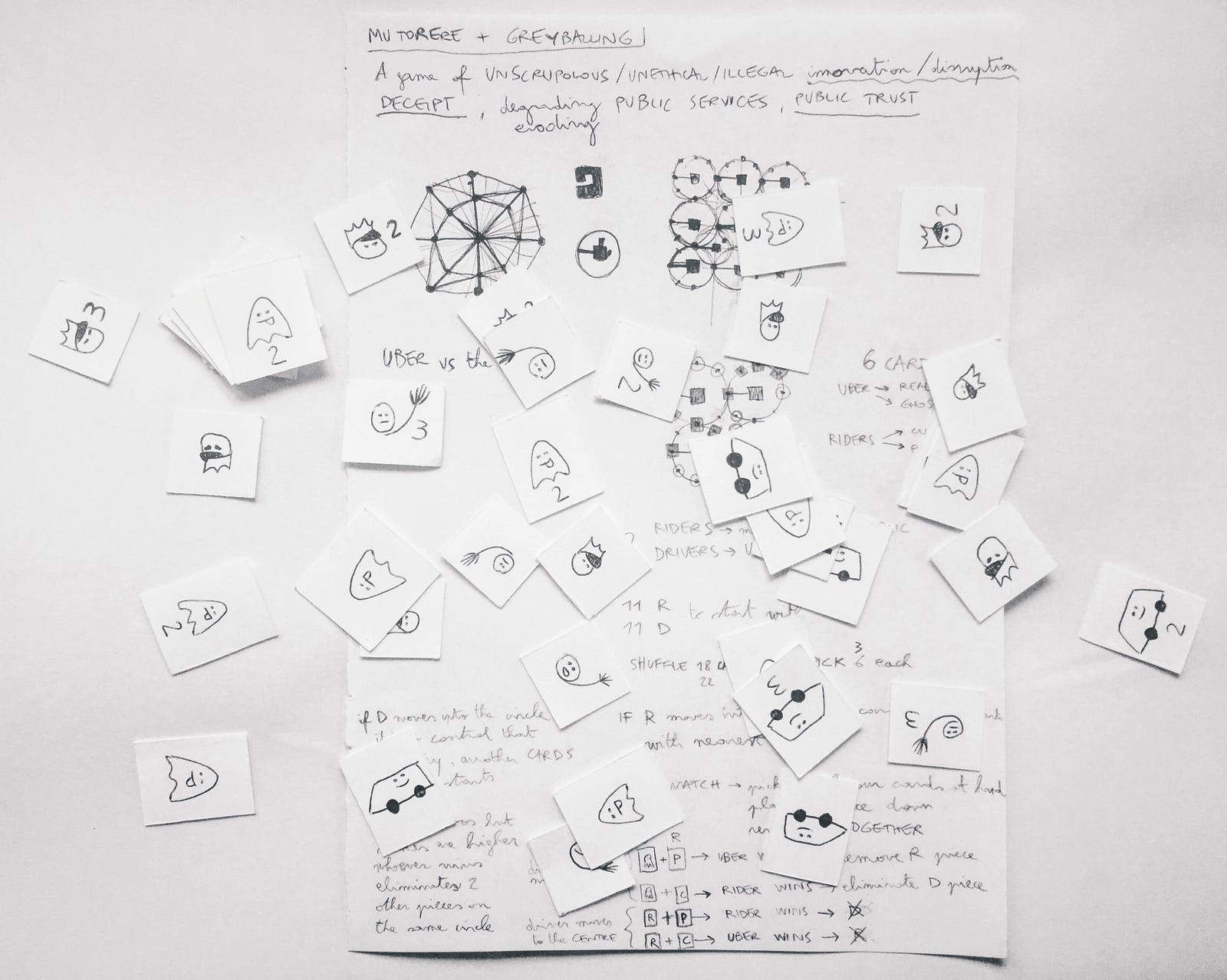
3. Paper-prototype and solo-playtest
I try to get something playable as quickly as possible. A lot of the design process happens in this phase, moving bits of paper around and playing out different scenarios, changing the rules on the fly.
Before I try the game with other people, I want to make sure it’s not broken so that I won’t waste their precious time.
Solo-playtesting means you play your game on your own, pretending that you are all players. It feels awkward the first few times, as you decide on all the players’ moves and know all the in-game information. However, solo-playtesting is extremely useful to ensure your prototype doesn’t have mechanical flaws and that emerging play dynamics are in line with what you expect.
I would recommend you solo-playtest both new game concepts, and any change you introduce to an existing game.
4. Playtest with people, then re-prototype
If you ask any game designer what’s the most important part of the process, 99% of them will answer: playtesting.
Whether it’s a boardgame or a videogame, your thing is going to be played by other people. You cannot experience it on their behalf. You can design rules that will influence their experience. Then teach those rules to your guinea pigs and observe them playing.
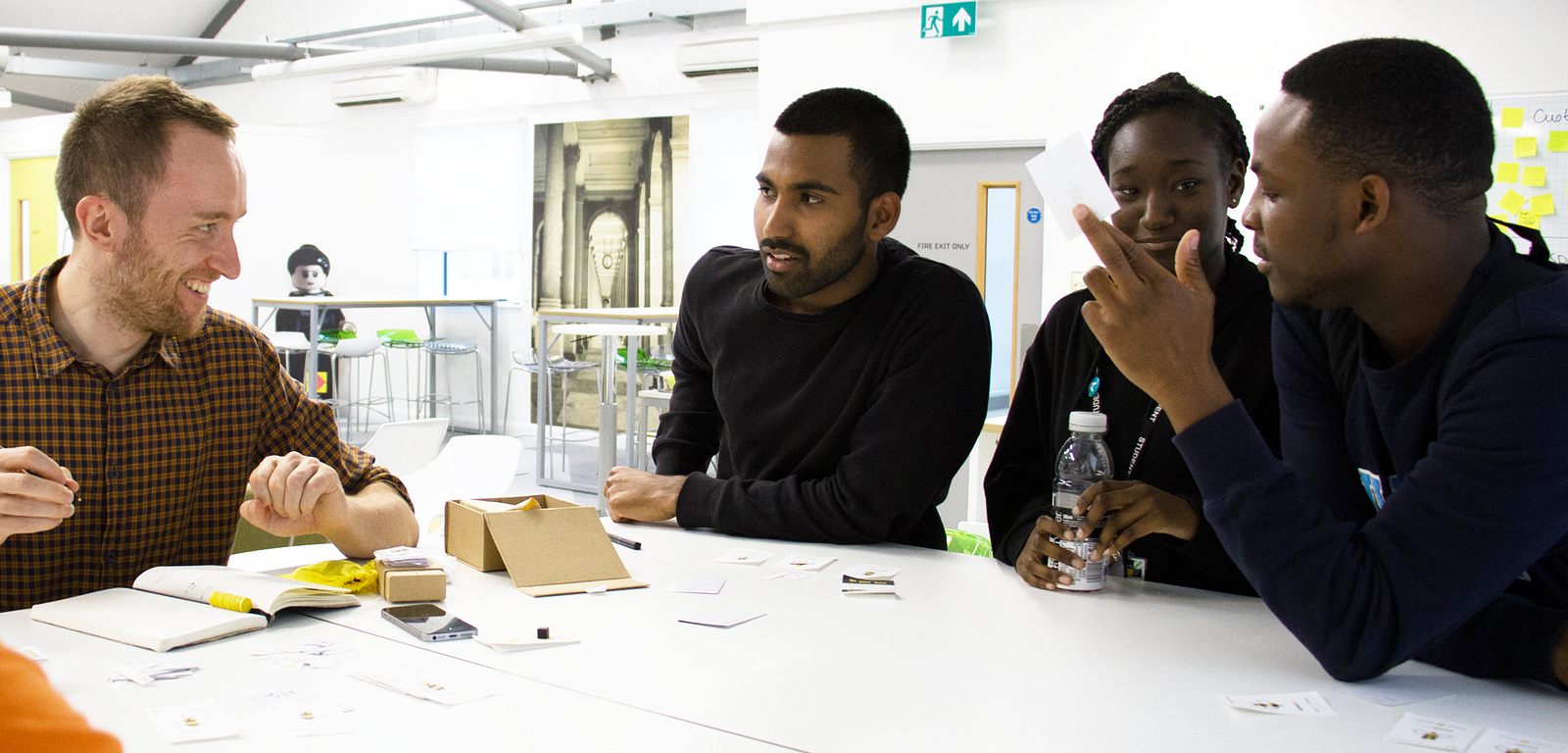
How does one recruit playtesters outside of friends&family circles? If you’re based in the UK, join the PlaytestUK meetup!
At one of those meetups, I learned from Bez that putting my phone in the middle of the table and audio-recording the session is the best way to capture everything about the experience without distracting players. It also lets me focus on interacting with players instead of furiously writing notes.
Another trick I learned is that when people ask you for clarifications, that’s an opportunity for you to flip the question back at them: How would you solve this if I weren’t here?
Most of the time playtesters will surface a problem with your game, but their diagnosis of that problem will be wrong. It’s your role to steer the conversation away from diagnosing the game, and keep it at the symptoms level. Ask players about their experience, not their suggestions.
5. Repeat until happy 
Then, back to step 3.
As the game takes shape, you will playtest different aspects of it. At the beginning it’s the core mechanics, possibly without winning conditions, on rough prototyping material. I used scribbled post-its, chocolate chips and dried beans to simulate respectively bees, honey and flowers in early prototypes of Beesness.
After I ensured that a game works and it triggers the intended experience/feelings, I want to check how people learn it. At that point I’m mostly testing the rulebook, and the information I put on the game components. This is what the pros call blind playtesting: you give game + rulebook to a bunch of playtesters and watch them butcher it, in silence.
6. Productise?
This is something I’m still working on. Karen made a great point during our game design panel:
It’s tempting to jump ahead and launch your game on Kickstarter after a couple of playtests. Try to resist that urge and focus on testing your game thoroughly.
So this is my game-making process, at the moment. I encourage you to look up the designers of your favourite games. It’s quite likely that in some corner of the internet they’ve talked/written about their process.
Also, the Videogames: Design/Play/Disrupt show at the V&A does a great job dissecting the process of making games like Journey or Consume Me, including sketchbooks, level-design spreadsheets and initial prototypes!
Q: How does one transition into a career in games?
A few ideas that worked for me. I hope you’ll find them useful too.
1. Expand your games literacy
If you wanted to become a writer, you’d probably start by reading a lot. If you want to design games, start by playing a lot of them. Beyond the obvious ones like Monopoly (which is an awful game anyway).
And most importantly, play games critically. Blog/vlog about what you like and dislike about them. Form and articulate your opinions.
Turns out one of the perks of being a grown-up is that we can buy our own toys. When I decided I wanted to make games, I set aside a monthly budget to buy games that came recommended from friends or peeps on Twitter. No need to make a business case to the parents!
2. You don’t need to be a coder to design a game
So how do you get started? By picking an existing boardgame and hacking it into something new.
Hacking is a word that received a lot of bad press, but we could also look at it as taking a game apart and then putting it back together. In the process you’ll introduce small or big changes, which will turn it into something quite different from the game you started with.
Why boardgames? Making boardgames is quick, collaborative and accessible. There are practically no barriers to entry. Because in a boardgame the players are the game engine, hacking is just a matter of convincing the other players to give the new rules a go. In the process you’ll learn loads about designing games, even videogames.
Still, you may want to make videogames eventually. Great! You can get started with tools such as Bitsy, PuzzleScript, Twine or Pico8, to name a few. Once you’ve cut your teeth with those, you can move on to battle the code bosses with Unity (or similar).
3. You don’t need to make games on your own
In my experience so far, the indie game-makers community is very friendly and inclusive. Even if you don’t have a game idea, you can start attending playtest meetups, where you’ll get a chance to try out game prototypes from other fellow designers and make friends.
Another way to get involved is taking part in game jams: usually 1–2 day gatherings for people interested in making games together, loosely based on a theme or challenge.
Last year I took part in a jam organised by Games for the Many. I met several people who never made a game before, but were eager to give it a try and help in whichever way they could. Some of us clustered around the idea of making a hybrid board-videogame about/against austerity. Our team included a sound designer, a web developer, an interface designer and two Italian hecklers :) Over a weekend we hacked together CUTS: put the FUN back into underFUNding.
Imagine what you could build in a weekend!
Q: Is a portfolio important to get employed in game development?
No, you don’t need to bullshit people about what you could be doing if only they gave you the opportunity to develop something similar to the half-baked projects one typically stuffs a portfolio with.

Here’s a dog someone in the audience drew for us.
It meows.
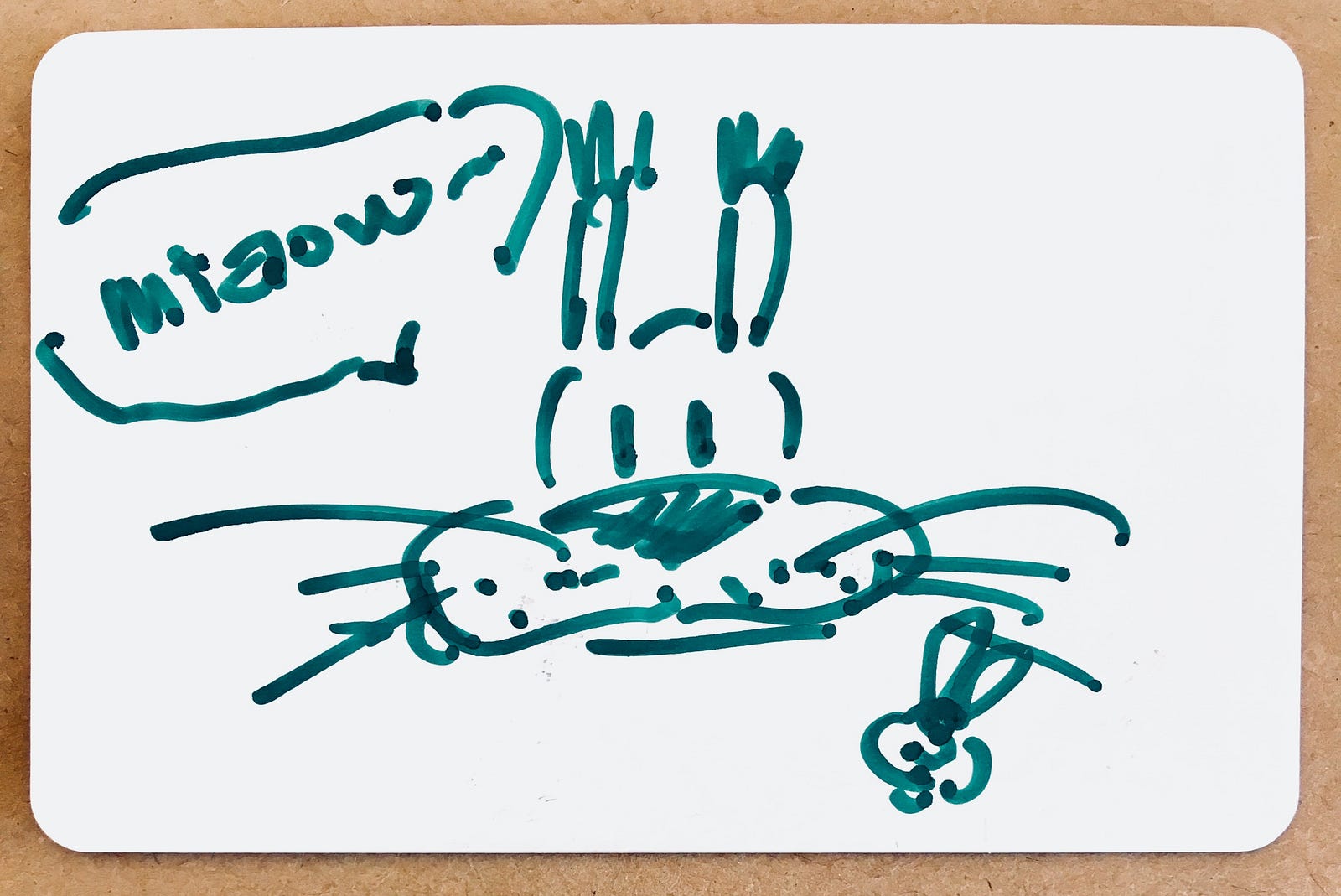
More questions?
Remember, all game designers had to start somewhere, with little to no experience. And of all the things to learn in the world, this is a really fun one!
So enjoy the process, and if you have any questions…
Email me m.menapace@vam.ac.uk. I promise to get back to you, as long as it’s games-related!
If this story inspired you to make a game but you have no idea where to start, check out this tutorial: how to make your first game in less than 2 hours (11 minutes read, apparently).




